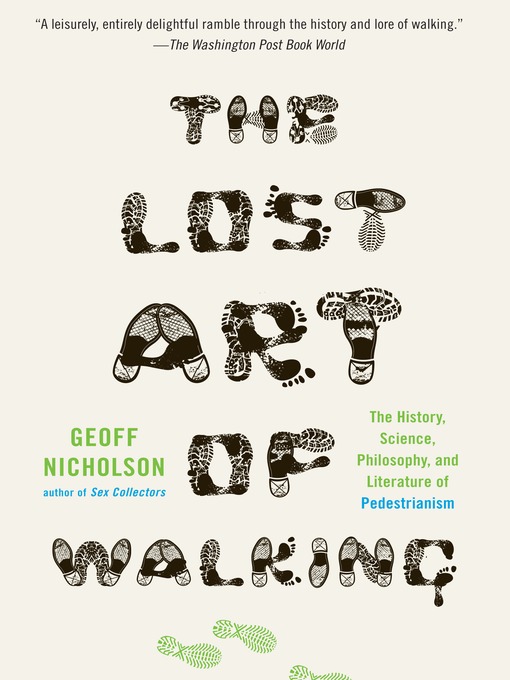
The Lost Art of Walking
The History, Science, and Literature of Pedestrianism
کتاب های مرتبط
- اطلاعات
- نقد و بررسی
- دیدگاه کاربران
نقد و بررسی

September 1, 2008
“Setting foot in a street makes it yours in a way that driving down it never does,” says Nicholson (Sex Collectors
), and mundane though walking may be, Nicholson tells us in this leisurely, charmingly obsessive literary stroll, pedestrianism is not without drama, from pratfalls like the one in which he broke his arm on an innocuous Hollywood Hills street to getting lost in the desert of western Australia. Walks, he reminds us, have inspired writers from Thoreau and Emerson to Dickens and Joyce, as well as musicians from Fats Domino to Aerosmith. Nicholson guides readers from the streets of L.A.—where walkers are invariably regarded with suspicion—to New York City and London. He considers the history of “eccentric” walkers like the “competitive pedestrian” Capt. Robert Barclay Allardice, whose early 19th-century walking feats gave him the reputation of a show-off. From street photographers to “perfect” walks—the first at the Poles, the first on the moon—and walks that never happened, Nicholson's genial exploration of this “most ordinary, ubiquitous activity” is lively and entertaining.

October 15, 2008
Prolific author and novelist Nicholson ("The Food Chain") has penned an engaging and entertaining treatise on walking. Chapters include amusing descriptions of walks through cities such as Los Angeles, New York, and London and musings about professional and nonprofessional walkers past and present, walking through nature, street photographers and their craft, and the long walk home or away from home. Nicholson's witty style and distinct way of describing an ordinary activity make this a thoroughly enjoyable read. While by no means exhaustive, Nicholson does himself tread a lot of ground; readers may find the ultimate effect is that they are inspired to put the book down for a nice long walk with a newfound way of observing the scenery. In the author's words, "it confirmed for me what I'd known all along, that walking isn't much good as a theoretical experience." The book includes a bibliography, but there aren't references for many of the intriguing tidbits he includes, which may disappoint academics and serious readers. Recommended for public libraries and sociology collections.Mary Grace Flaherty, Ph.D. candidate, Syracuse Univ., NY
Copyright 2008 Library Journal, LLC Used with permission.

October 1, 2008
Nicholson has written one of those charming titles that meanders in and out of history, geography, philosophy, and all manner of literary references in the way of Sarah Vowell and Roger Deakin. Hemakes it all seem so effortless that it is only later, after completinghis invaluable walking bibliography, that readers will grasp how well-read heis. As Nicholson writes about his own experiences walking in Los Angeles, New York, London, and other less populated locales, he threads in observations about Raymond Chandler, Bruce Chatwin, Virginia Woolf, Paul Auster, and an entire host of singers and songwriters. Psychogeography is defined and discussed along with urban blight and renewal, thenature of cities, and the difference between labyrinths and mazes. Nicholson flows readily from one subject to the next, carryingreaders along on a smart and entertainingexploration of both physical action and cultural inquiry.From prisoners seeking peace, to a Ray Bradbury short story, to the big myth of Maos Long March, the world is at Nicholsons fingertipsand feet.(Reprinted with permission of Booklist, copyright 2008, American Library Association.)

























دیدگاه کاربران